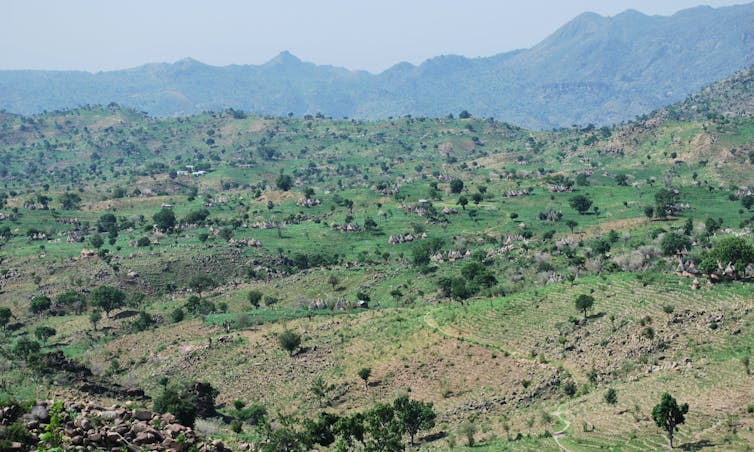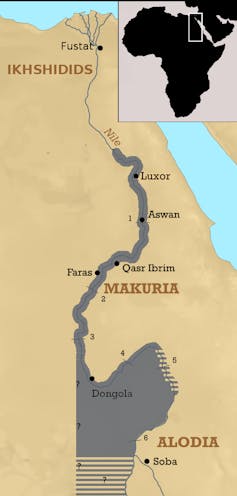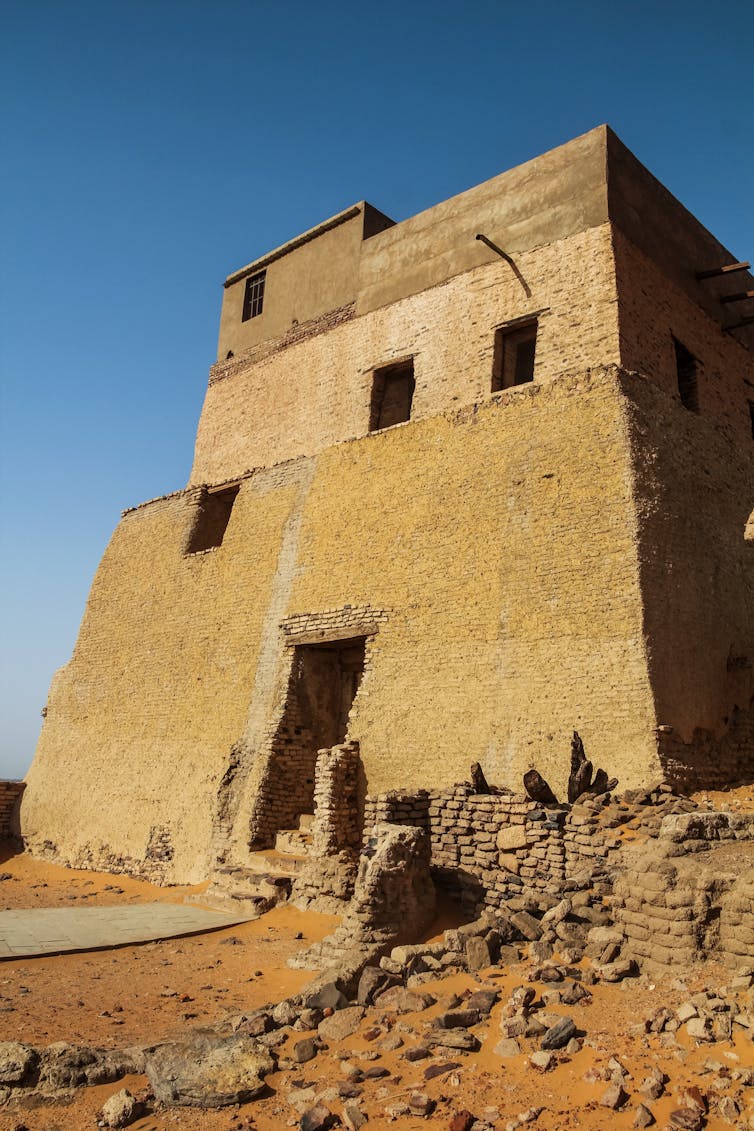|
Getting your Trinity Audio player ready...
|
Pre-colonial African history is alive with tales of civilisations rising and falling and of different cultures intermingling across the continent. We have now shed more light on some of these societies using the science of genetics.
In a study published in Science Advances, my co-authors and I used DNA information from people from the present-day continent to shed light on important civilisations that existed before colonialism. Genetic information from blood samples was extracted by machines. Once the sequence of “letters” in the DNA code had been read, or sequenced, we could use computers to compare genetic differences and similarities between the populations in the study.
One striking result concerned two ethnic groups in the north of present-day Cameroon, in west-central Africa, the Kanuri and Kotoko peoples. We found that these two groups were descended from three ancestral populations.
These ancestral groups most resembled people now living in coastal regions of west Africa as well as in parts of east Africa such as Ethiopia and populations living today in north Africa and the Levant. The populations intermixed – had children together – roughly 600 years ago. But what caused them to migrate thousands of kilometres across a desert into northern Cameroon?
Tourbillon / Wikipedia Project
We think the answer is the Kanem-Bornu empire, a civilisation that existed for over 1,000 years – beginning around 700 AD. At its height, the empire spanned what is now northern Cameroon, northern Nigeria, Chad, Niger and southern Libya. It operated vast trade networks across the Sahara and attracted populations from every direction.
This example highlights how our genomes hold information about major events of the past. Merchants travelling along trade routes or the formation of empires from smaller political units can leave footprints in our DNA. Previous work shows that the Roman empire, the Mongol empire, and Silk Road trade probably all left lasting legacies in the genomes of modern-day people across Eurasia.
Hidden in the genome
We analysed 1,300 newly collected genomes of people from across Africa. They came from 150 ethnic groups within five countries. We collaborated with anthropologists, archaeologists and linguists from Africa and elsewhere. They helped us understand the historical context of these events.

Scott MacEachern, Author provided
African genome data is underrepresented compared with that from other world regions. This means that lots of genetic diversity – or variety – in the DNA of populations is probably being missed by scientists.
Studying genetic diversity has many potential uses – such as understanding risks to health and developing new treatments for disease. Our group was concerned with genetic diversity as a window into the past.
Dating events
We modelled a person’s genome as a mixture of segments of DNA inherited from their ancestors. If a person had DNA segments closely matching two groups of people – for example, Europeans and west Africans – it suggested that this person descended from mixing between those two groups.

evenfh / Shutterstock
Present-day human groups that were formed from a recent mixture of Europeans and west Africans should have long sections of DNA from both populations. Those ancestral DNA segments get shorter as the genetic material of their descendants is shuffled with each new generation.
This provides a way of dating when mixture events took place. The longer the DNA segments matching, for example, west Africans or Europeans, the more recent the mixture event was.
Peace treaty
Another historical event we found evidence for was the Arab expansion in Africa. This began in the seventh century, when separate Arab armies travelling south along the Levantine coast and north from Medina in today’s Saudi Arabia crossed the Sinai desert and conquered Egypt.

Le Gabrie, CC BY-SA
In Sudan at this time, the Kingdom of Makuria ruled along the Nile river. Makuria signed a peace treaty with the Egyptian Arabs in the middle of the seventh century that lasted almost 700 years.
The majority of mixing between these two ancestral groups, one closely related to Arabs and the other to Sudanese, dates to after the peace treaty began breaking down. This in turn coincided with the decline and eventual collapse of Makuria itself, which would have allowed Arab groups to continue down the Nile into Sudan.
But we also found evidence of earlier migrations into Africa from the Arabian peninsula, which occurred by sea. This intermixing coincided in time with the Kingdom of Aksum, located in northeast Africa and southern Arabia, during the first millennium AD.

Matyas Rehak / Shutterstock
Aksum was once considered one of the world’s four great powers, alongside contemporary empires in China, Persia and Rome.

Newslea Staff / Wikipedia, CC BY-SA
The expansion of Bantu-speaking peoples
Genetic studies have also found evidence of a continent-wide migration known as the expansion of Bantu-speaking peoples. “Bantu” is a language group, now spoken by around one-quarter of Africans.
There has been debate about whether the Bantu languages spread largely as a transmission of culture, or whether large-scale migration was involved. The latest research shows that the latter explanation is the likeliest. This migration started in a small area of western Cameroon roughly 4,000 years ago, before rapidly spreading south and east. It covered more than 4,000 kilometres in less than 2,000 years.
Bantu speakers mixed with local groups, changing patterns of genetic diversity in Africa forever. We showed that migrations not only occurred to the south and east of Cameroon, but also to the west. Why so much movement took place at this time is unknown, but climate change may have played a role.
It’s vital that scientists analyse more DNA from genomes of African people. As we do so, it will undoubtedly reveal an intricate picture of the continent’s rich past.



